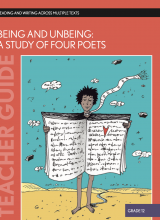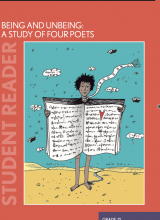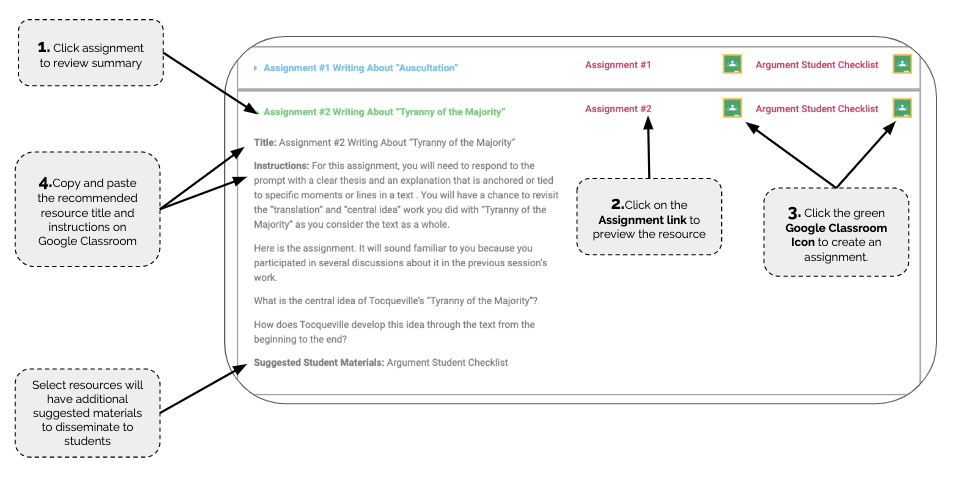Being and Unbeing:
A Study of Four Poets - Grade 12
The work of this unit centers on four very different sets of poems:
Three raps from The Tipping Point and How I Got Over, two albums from the rap group The Roots.
Five poems and prose poems from Sonia Sanchez’s book Homegirls and Handgrenades.
Fourteen poems by E. E. Cummings.
Four poems from Carolyn Forché’s The Country Between Us.


Table of Contents
Writing Tasks
Title: Interpretive Assignment #1: Being and Unbeing in The Roots
Teacher Manual Instructions:
Session 7
Review the assignment with the class and answer any questions students have. Remind students of the following as well:
Before you write your paper, you will have an opportunity to reread the raps, to “try out” your ideas, and to listen to other people’s ideas in small- group and whole-class discussions. The writing task will be easier for you if you make notes during these discussions. Also, don’t hesitate to mark up or highlight moments in the raps that could illustrate your answers. Remember, rereading is a powerful tool for making sense of difficult texts; also, be sure to draw on the notes and charts generated during the other work with these raps.
Place students in groups of two or three.
Suggested Student Materials: Interpretive_Argument Checklist
Title: Writing Like The Roots
Teacher Manual Instructions:
Session 9
Review the assignment with the class and negotiate a date for submission and/or performances.
After the raps have been submitted (or after several raps have been shared with the class), ask students what it was like to “try on” The Roots’ voice and style. What was tricky about it? What was interesting or fun? Is there anything they might want to continue experimenting with based on this work?
Title: Writing Like E. E. Cummings
Teacher Manual Instructions:
Session 15
Give students time to begin the assignment.
Use this time to confer with students about the task. Also, be sure to try the task yourself and to participate in the sharing time ahead.
Title: Interpretive Assignment #2: Being and Unbeing in E. E. Cummings
Teacher Manual Instructions:
Session 17
Review the assignment with the class and answer any questions students have. Consider asking students to reflect on their small-group work up to this point and to set goals for the session.
Place students in groups of twos and threes.
Suggested Student Materials: Interpretive_Argument Checklist
Title: Hip-Hop and E. E. Cummings
Teacher Manual Instructions:
Session 21
Place students in pairs or trios. Students should work on “Doing Documentary Work: Assignment #2” in their small groups.
Remind students that they should use the small-group time to reread the essay, to “test” possible answers, and to make notes that they can use to participate in the upcoming whole-group discussion about the questions.
Suggested Student Materials: Interpretive_Argument Checklist
Title: Interpretive Assignment #3: Being and Unbeing in Sonia Sanchez
Teacher Manual Instructions:
Session 29
Review the assignment with the class and answer any questions students may have. Consider asking students to reflect on their small-group work up to this point and to set goals for the session.
Suggested Student Materials: Interpretive_Argument Checklist
Title: Writing Like Sonia Sanchez
Teacher Manual Instructions:
Session 32
Review the assignment with the class and negotiate a deadline for submission and sharing. After the write-likes have been submitted, ask students what it was like to “try on” Sanchez’s voice and style. What was tricky about it? What was interesting or fun? Is there anything they might want to continue experimenting with based on this work?
Title: Interpretive Assignment #4: Being in Unbeing in Carolyn Forché
Teacher Manual Instructions:
Session 38
Suggested Student Materials: Interpretive_Argument Checklist
Title: The Retrospective Essay
Teacher Manual Instructions:
Session 42-43
Charts for Discussion
Title: Techniques Used By Cummings
Teacher Manual Instructions:
Session 14
Create a chart titled “Techniques Used By Cummings” for the class to see and divide it into two columns. Title the left column, “Label,” and the right, “Excerpt.” Negotiate with the class to settle on one or two names for each move and place these nam
Title: Hip-Hop and E. E. Cummings: Similarities
Teacher Manual Instructions:
Session 21
Reconvene the class and facilitate a brief discussion about the groups’ findings: What similarities between Cummings and hip-hop have they noticed? Capture the findings on a chart titled “Hip-Hop and E. E. Cummings: Similarities.” Keep in mind that the class will have a full discussion of this topic in the next session; this is just a quick charting of ideas. Take about 3-4 minutes and insist that students illustrate their ideas with specific moments from the texts.
Checks for Understanding
Title: Introducing The Roots
Teacher Manual Instructions:
Session 3
Place the following two questions on the board and review them with the class, defining any terms with students as necessary.
- “When you look at the writing in this rap, what do you see the writer(s) doing? What qualities or features of the text stand out to you? In other words, what’s going on with language, with words, syntax, allusions, etc.?”
- “What do you think The Roots are saying in this rap? What is their message (or what are their messages) to the listener?”
Check for understanding: Reconvene the class and conduct a brief (5-7 minute) conversation about the questions on the board. Keep in mind that this is basic “getting acquainted” level work and move through discussions with relative speed. It is okay for the class not to have fully developed concepts of each rap’s message, for example. Record the students’ responses on a song-specific chart that the whole class can see, and ask students to write down notes from any new or interesting ideas that come up in the conversation in their organizers.
Tell students that they will have an opportunity to do the same work with two more raps by The Roots during the next session.
If desired, collect and skim through students’ notes between this session and the next, and take a moment at the beginning of the next session to provide any appropriate feedback and clarify any expectations. Again, these notes are intended only to feed into the larger interpretive tasks of Session 6 and Sessions 7-9.
Title: Small-Group Work: Problems and Solutions
Teacher Manual Instructions:
Session 7
Use the closing meeting to debrief the small-group work experience with the class.
Consider working with students to generate a two-column chart titled “Small-Group Work: Problems and Solutions.” Title the left column, “Problems,” and the right, “Possible Solutions.”
Encourage volunteers to offer items for the left column and then ask the group to help brainstorm responses to these issues.
Title: Being and Unbeing in The Roots
Teacher Manual Instructions:
Session 8
Once again, the teacher should act as facilitator and recorder. In addition to facilitating this conversation, work to capture the students’ responses to the question on a chart titled “Being and Unbeing in The Roots.” (You will need this chart in the next session.)
Title: During Interpretive Discussions …
Teacher Manual Instructions:
Reconvene the class and ask students to help you retrace the text-based discussion. Ask students to help you recall what happened during the discussion: to notice how the class looked for claims; to notice places where a person extended or critiqued another person’s interpretation; to notice what the facilitator did to focus and refocus the discussion; and to notice instances in which participants used the text to substantiate or explain an interpretation. In short, use this time to guide students to do the metacognitive work they need to do in order to notice what must happen for this kind of work to get done well.
Capture these “noticings” on a chart titled “During Interpretive Discussions….”
Title: Being and Unbeing in E. E. Cummings
Teacher Manual Instructions:
Session 18
Check for understanding: In addition to facilitating this conversation, be sure to capture students’ responses to the question on a chart titled “Being and Unbeing in E. E. Cummings.”
Title: Being and Unbeing in Sonia Sanchez
Teacher Manual Instructions:
Session 30
Check for understanding: In addition to facilitating this conversation, be sure to capture students’ responses to the question on a chart titled “Being and Unbeing in Sonia Sanchez.”
Title: Being and Unbeing in Forché
Teacher Manual Instructions:
Session 39
Check for understanding: In addition to facilitating this conversation, be sure to capture students’ responses to the question on a chart titled “Being and Unbeing in Forché.”
Independent Reading
Title: Book Interview
Instructions:
Display a copy of the “Book Interview” sheet for the class to see and distribute copies to students.
Using one of the books from the classroom library, model for students how to interview a book and how to fill out the sheet. Answer any questions students have about the form and its terminology.
Give students time to interview three books and to enter their findings on the “Book Interview” sheet.
Title: Book Pass
Instructions:
Organize students’ desks into a circle (or, if this is not possible, determine a very clear path for books to pass through the group).
Explain the purpose of a book pass:
A book pass is another way to expose students to the texts available in the classroom library. A book pass requires students to use their book interviewing skills. A book pass is a chance for students to find titles to add to their “Books I’d Like to Read” list.
Display a copy of the “Book Pass” for the class to see and pass out copies to students.
Demonstrate for the class how a person goes about making an entry on the form. Since students will need to write quickly, show how an author can be listed just by last name and first initial, and demonstrate how a student can abbreviate a long title if necessary. What matters is that they have enough information to track down the book again later if they need to.
Give each student one book (or magazine). Tell them it doesn’t matter which text they start with, because they will see all—or at least many of—the books. (Be sure you have one title for each student in the circle.)
Choose a direction for passing.
After students receive a book, they should immediately record the author’s name (if the text is a book) and title on the “Book Pass” form.
Give students one minute to interview each book following the procedure established in the previous session.
At the end of one minute, call “pass.” At this time, students should make an entry in the comments column and pass the book to the next student.
Continue the book pass until each student has interviewed all the books.
Title: Book Recommendation
Instructions:
Distribute copies of the “Book Recommendation” form to students and give them time to craft or begin crafting their first review. Students can choose to write about a book they’ve completed recently or one they remember well from past reading.
Title: Goals for My Reading Life
Instructions:
Display a copy of “Goals for My Reading Life” for the class to see and distribute copies to students.
Use this time to review how to fill out the goals sheet. Be sure to show students how they can use the charts to generate ideas for answers to the “Goals” questions.
Take a moment to stress the value and function of the “Books I’d Like to Read” list. Point out that this list is a tool that serves the same function as a bedside table for some readers: It is a place to store up titles or books that are “next in line.” Remind the class that readers constantly have their eyes open for “next” texts. A “Books I’d Like to Read List” is a way to prevent aimless and unproductive castings around for new reading materials. It’s a planning tool.
Explain that at the beginning of each marking period, each student will fill out a new goals sheet; at at the end of each marking period, students will take a few minutes to review their goals statements and reflect on their efforts to meet them.
Answer any questions students have about the “Goals for My Reading Life” forms.
Give students time to complete the form and set a deadline for submission. You may decide to photocopy these to keep a set for yourself. Return the forms to students during the next session and have them attach the form to a page in their notebook or save it for their student portfolio (see Creating a Student Portfolio).
Title: Reading Log
Teacher Manual Instructions:
Show students how to set up a “Reading Log” in their notebook. They should be sure to enter it in their table of contents. You may decide to distribute sticky notes so that students can flag this page. Use the model on the next page to guide your efforts.
Notice the column titled “Date Completed/# of Pages Read.” This column is a place for students to record, and receive credit for, the reading of texts that did not require a “cover-to-cover” experience. Be sure to point out that reading sections of several texts for specific purposes is not the same as skipping aimlessly from book to book to book. The former often indicates purposefulness and interest; the latter can indicate confusion or disengagement.
After students have set up the reading log—including proper headings, creating the grid, etc.—demonstrate how to make an entry.
Answer any questions students have about the log.
Remind students that the reading log is a tool to be used in conjunction with the “Goals” sheets. Students track their reading in the log and then use the log to evaluate their progress toward their goals.
If you plan to use student portfolios this year, consider introducing them at this time using some version of the information in the section that follows. Review Creating a Student Portfolio in advance to be sure you have thought through some of the important questions for portfolio work.
Unit Resources
Title: Interpretive Assignment #1: Being and Unbeing in The Roots
Title: Interpretive Assignment #2: Being and Unbeing in E. E. Cummings
Title: Interpretive Assignment #3: Being and Unbeing in Sonia Sanchez
Title: Interpretive Assignment #4: Being in Unbeing in Carolyn Forché
Title: Grades 11 and 12 – Interpretive_Argument Rubric
Title: Grades 11 and 12 – Informational_Explanatory Rubric
Title: Scaffolds and Modifications: Descriptions and Use
